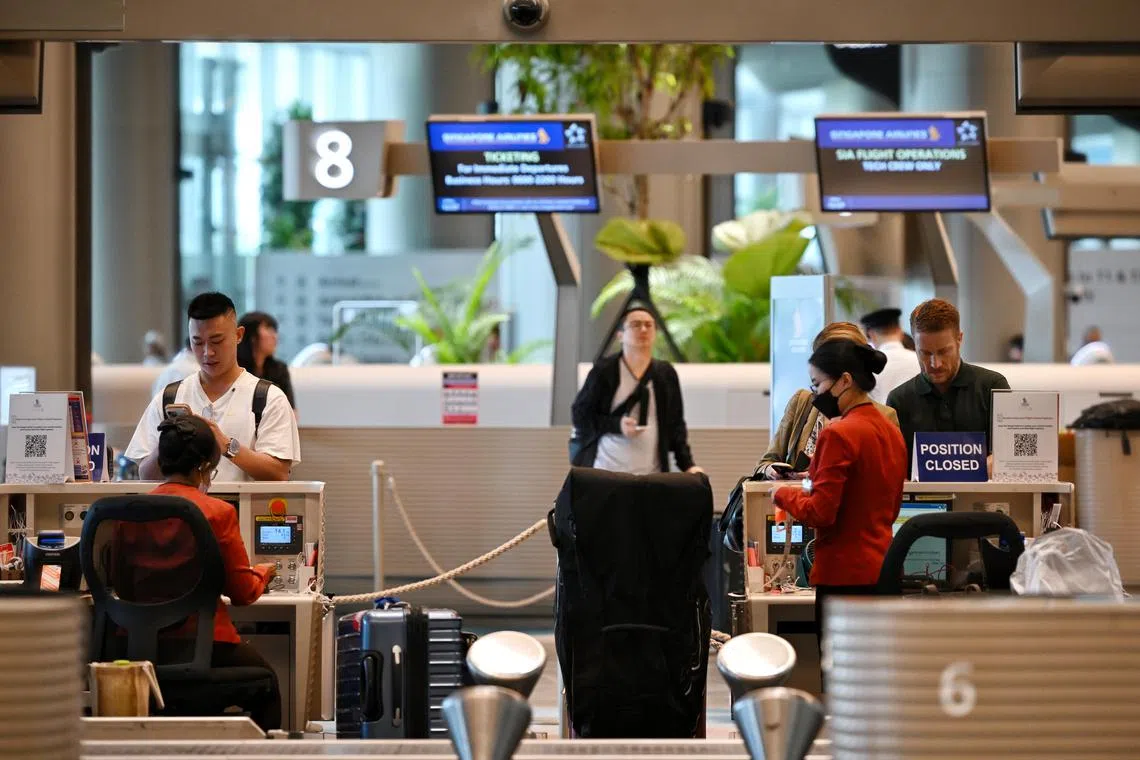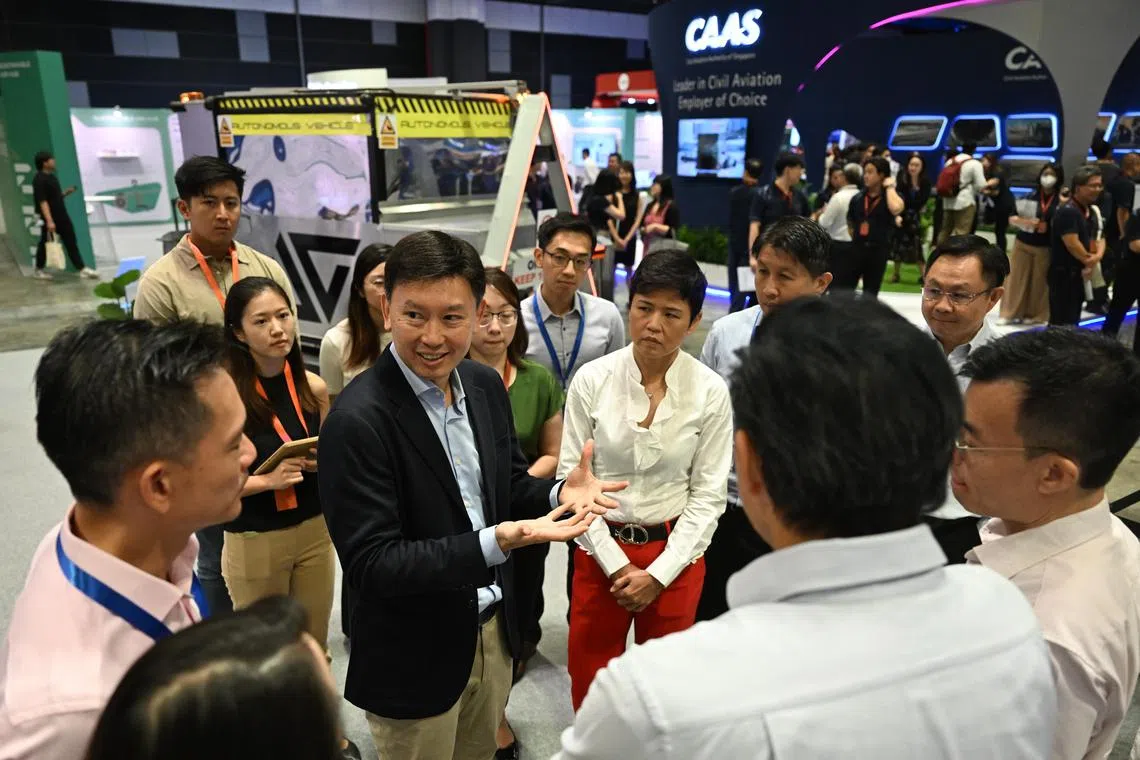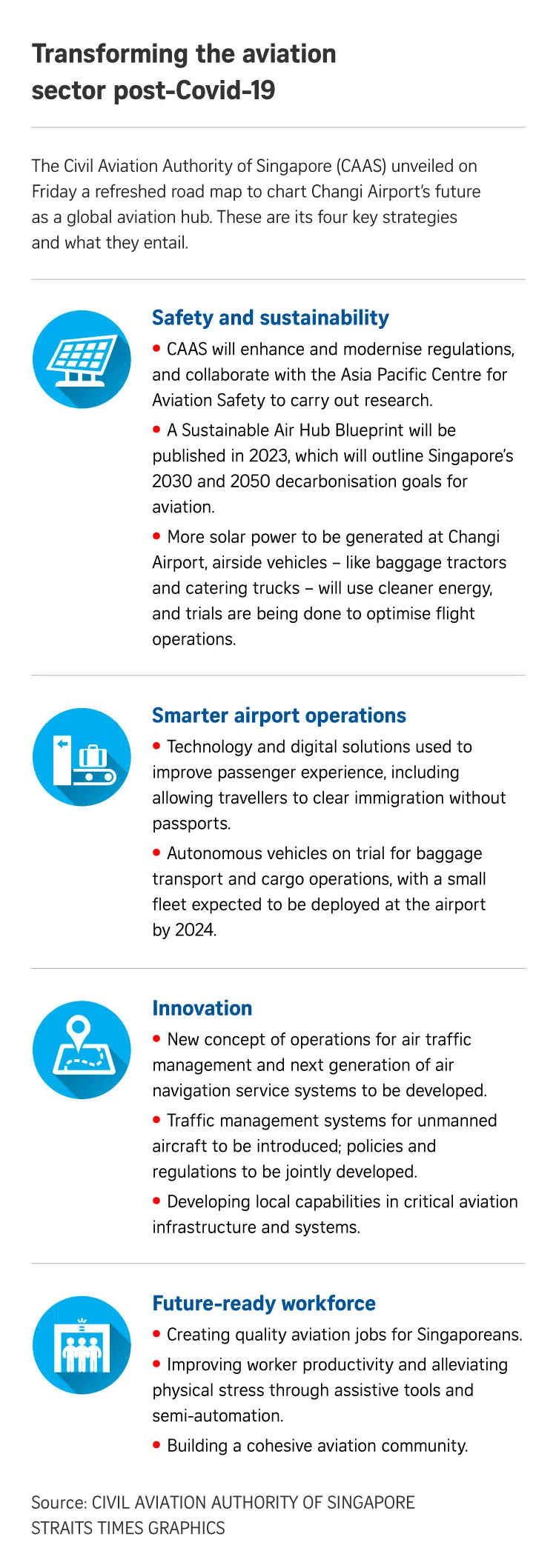Aviation sector to fill over 4,300 jobs in coming year; workforce at 95% of pre-Covid-19 levels
Sign up now: Get ST's newsletters delivered to your inbox

In May, the aviation workforce was at about 90 per cent of 2019 levels.
ST PHOTO: KUA CHEE SIONG
Follow topic:
SINGAPORE - More than 4,300 aviation jobs are expected to be filled in the coming year as Singapore positions its air hub for post-Covid-19 growth, Acting Transport Minister Chee Hong Tat said on Friday.
The jobs on offer include positions for pilots, cabin crew, engineers and technicians.
After losing about a third of its workers during the pandemic as air travel ground to a halt, the air transport sector has since rebuilt its workforce to about 95 per cent of pre-Covid-19 levels, Mr Chee said during the opening of the OneAviation Careers fair at Suntec City Convention Centre.
Before the pandemic, the sector employed 35,000 workers.
In May 2023, the aviation workforce was at about 90 per cent of 2019 levels.
The acting minister also unveiled a refreshed road map to chart Changi Airport’s future as a global aviation hub amid intensifying competition from neighbouring and regional airports.
“We must never take our current hub status as a given,” Mr Chee said.
He added: “Technology is progressing at a blistering pace, including advances in artificial intelligence... Our ability to adapt and transform with technology will determine if we remain a premier air hub or lose our position to competitors.”
While the skies look bright as passenger traffic at Changi
Challenges ahead
One key issue is that the Republic’s workforce cannot continue expanding at the same pace because of an ageing population, and workplaces and work practices will have to adapt to this, he noted.
“The aviation sector will have to contend with an increasingly tight local labour market, together with other sectors in the Singapore economy,” Mr Chee said.
By 2030, nearly one in four Singaporeans will be over 65,
This will be especially challenging for certain aviation roles involving physically demanding manual work, he added.
Hence, one of the four strategies laid out in the refreshed road map, or industry transformation map (ITM), for the sector is to transform airport operations through technology and automation.
The other strategies in the new Air Transport ITM 2025 are to build a safe and sustainable air hub unmanned aviation

Acting Transport Minister Chee Hong Tat (in black jacket) at the opening of the OneAviation Careers fair at Suntec City Convention Centre on Friday.
ST PHOTO: SHINTARO TAY
For instance, Mr Chee said autonomous vehicle trials for baggage transport and cargo at Changi are progressing well. A small fleet of these self-driving vehicles
The Civil Aviation Authority of Singapore (CAAS) said it would also work with the industry and unions to roll out assistive tools and “semi-automation”.
These moves will raise productivity and reduce the physical demands of ground-handling operations on the airside – the part of the airport that aircraft use.
For example, a new bulk baggage handling system being tested at Changi Airport will reduce the need for staff to check and stack baggage manually.

The Aurrigo Auto-Dolly exhibit at the OneAviation Careers fair at Suntec City Convention Centre on Friday.
ST PHOTO: SHINTARO TAY
Mr Chee said one of the aims is to tap new technology to help older workers learn new skills and make physical work easier to perform.
“We want to ensure that the sector can continue to grow and provide quality jobs.”
To draw more Singaporeans into the industry, CAAS on Friday inked pacts with three organisations to increase its outreach to young people.
Under the memoranda of understanding with the National Youth Council, Singapore Scout Association and the Singapore University of Technology and Design, there will be more avenues for young people to secure aviation jobs, for instance.
Friday’s ITM launch is part of a continuing effort to update road maps for 23 industries, in response to changes brought about by the pandemic.

An earlier version of the air transport sector’s road map, launched in 2017, laid out a target to raise the industry’s overall productivity by about 40 per cent by 2025.
It also aimed to redesign or create 8,000 “good jobs”, with more positions for professionals, technicians and cabin crew, by 2025.
The authorities then also outlined an ambitious plan to enlarge the economic value created by the sector by about $1 billion by 2020.
In response to queries from The Straits Times, CAAS said the sector was on track to meet these goals before it was disrupted by the pandemic.


